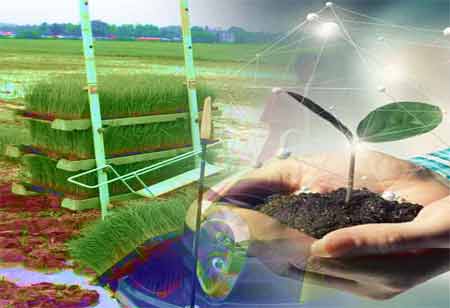Thank you for Subscribing to Agri Business Review Weekly Brief
Emerging Trends in the Phosphate Fertilizer Market
The global market for phosphate fertilizers is one of the most critical segments of the agricultural and food production industry

By
Agri Business Review | Thursday, February 01, 2024
Stay ahead of the industry with exclusive feature stories on the top companies, expert insights and the latest news delivered straight to your inbox. Subscribe today.
Fertilizers containing phosphates are essential for treating nutritional shortages in the soil, encouraging sustainability, and raising agricultural productivity. However, resource availability, nutrition management, and environmental sustainability issues must be addressed. Despite this, the phosphate fertilizers market is constantly evolving to satisfy the growing need for sustainable agricultural practices and food security, as agriculture is vital to the world economy.
Fremont, CA: The global market for phosphate fertilizers is one of the most critical segments of the agricultural and food production industry. Fertilizers containing phosphates are necessary for treating nutritional shortages in the soil, encouraging sustainability, and raising agricultural productivity. However, resource availability, nutrition management, and environmental sustainability issues must be addressed. Despite this, the phosphate fertilizers market is constantly evolving to satisfy the growing need for sustainable agricultural practices and food security, as agriculture is vital to the world economy. Here are eight emerging trends in the market:
High-Efficiency Fertilizers
Farmers are searching for fertilizers with higher nutritional content and release to maximize crop yields and minimize their environmental impact. Fertilizer application through irrigation systems, or fertigation, and specific mixtures are in high demand due to this development.
Geopolitical Instability and Resource Concentration
Due to its extreme concentration in a few strategic locations, namely China and Morocco, the market is susceptible to resource shortages and geopolitical upheavals. This is driving investments in the search for additional phosphate sources and the diversification of supply networks.
Organic and Bio-Based Alternatives
Organic farming and eco-friendly methods are gaining popularity among consumers. Organic and bio-based fertilizers are being developed as an alternative to conventional phosphate fertilizers. Scalability and cost-effectiveness issues, however, frequently plague these solutions.
Precision Agriculture and Data-Driven Decision Making
Due to technological advancements like sensors and data analytics, farmers can now adjust fertilizer applications depending on unique soil conditions and crop demands. This optimizes fertilizer efficiency and minimizes waste.
Sustainability and Environmental Concerns
Environmental issues related to water contamination and phosphate mining are driving the creation of sustainable practices. This entails reducing waste, looking into different phosphate sources, and encouraging the recycling of nutrients via compost and biofertilizers.
Regulatory Landscape and Policy Changes
Government restrictions on fertilizer use and its environmental effects can significantly impact the market. Market dynamics can be affected by changes in policy that encourage or discourage the use of particular fertilizers.
Technology in Fertilizer Production and Application
New developments in phosphate fertilizers, such as controlled-release coatings and nanotechnology, are increasing their efficacy and efficiency. By increasing crop yields, these innovations can contribute to a decrease in the quantity of fertilizer required.
Mergers and Acquisition
Due to mergers and acquisitions, the industry is becoming more consolidated as large competitors want access to resources and broaden their global reach. Rising competition and price volatility may result from this.





